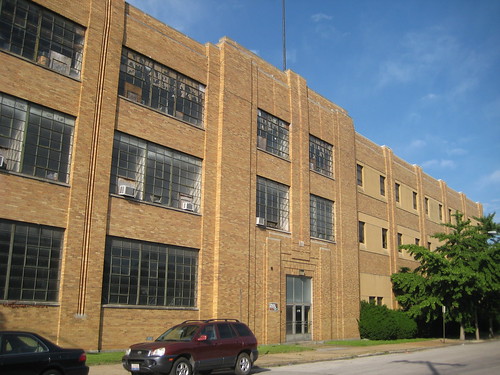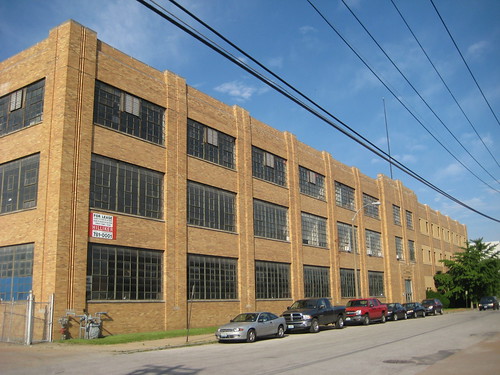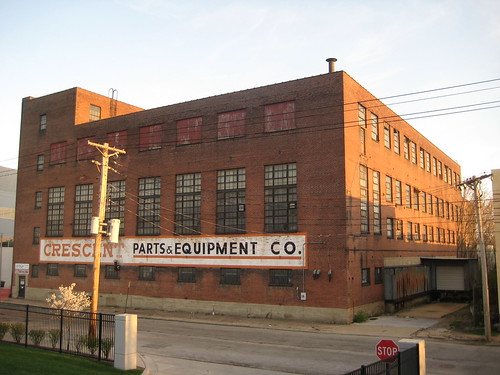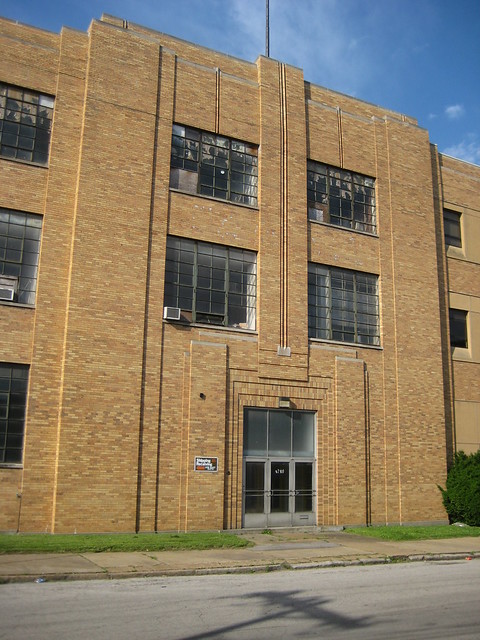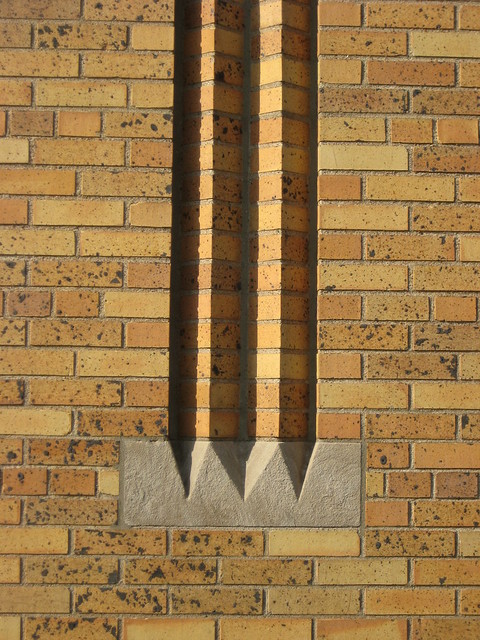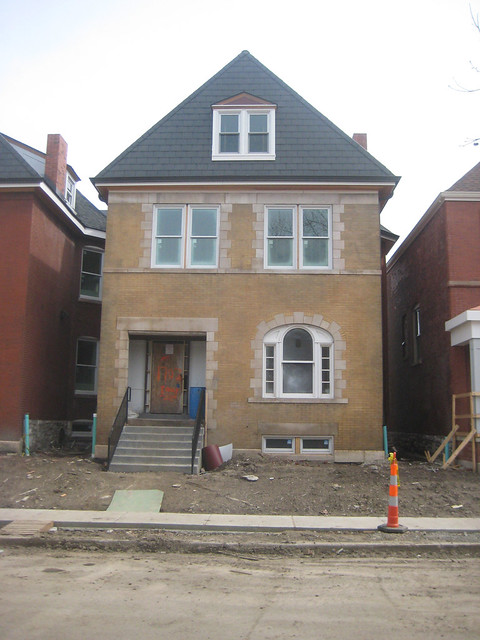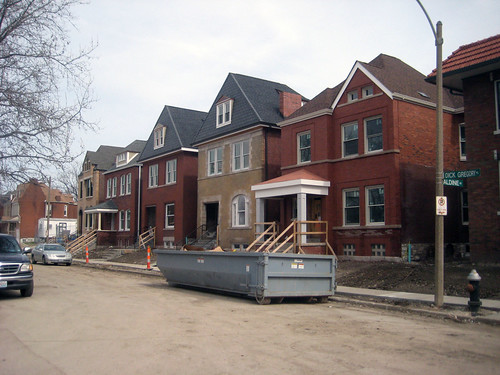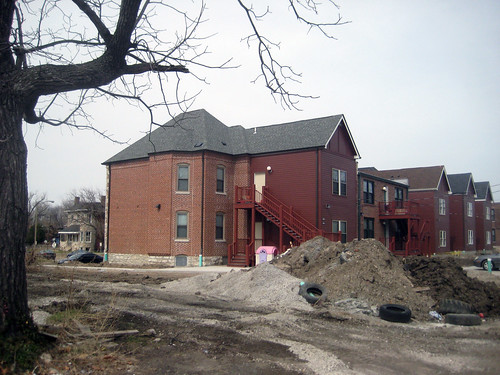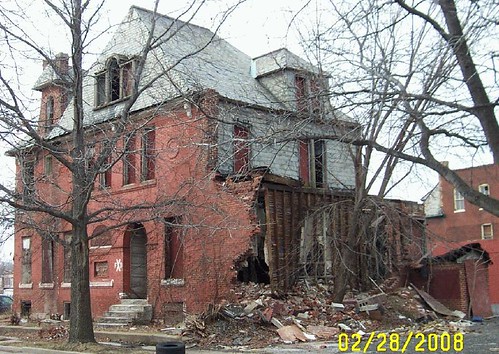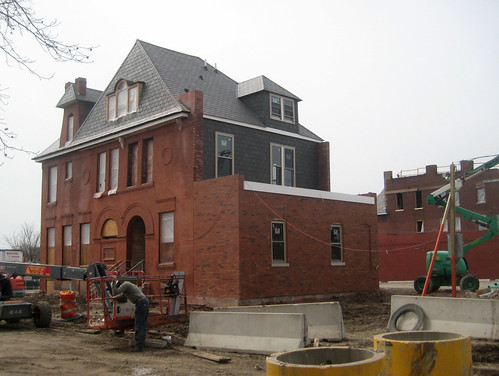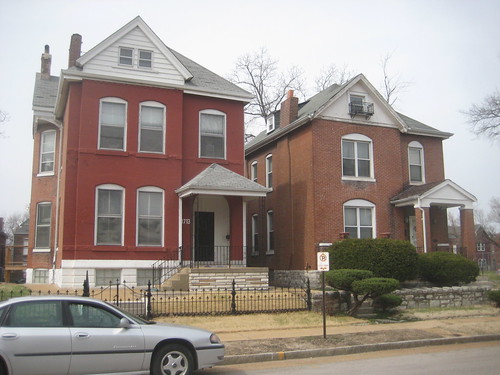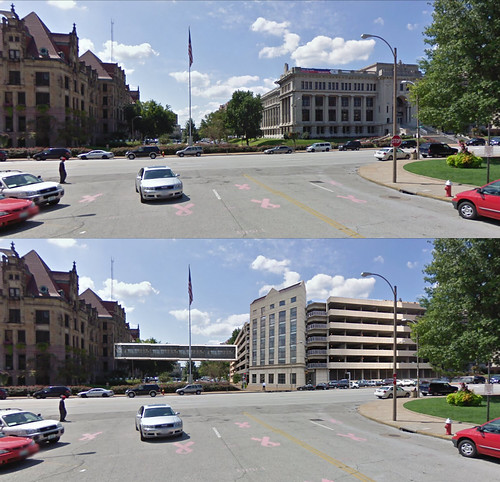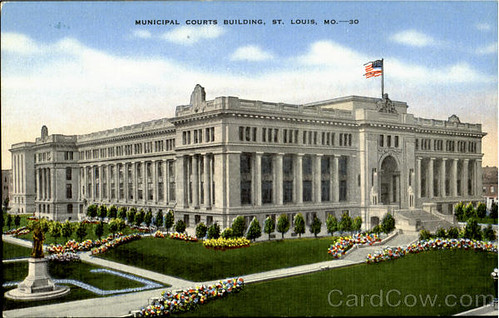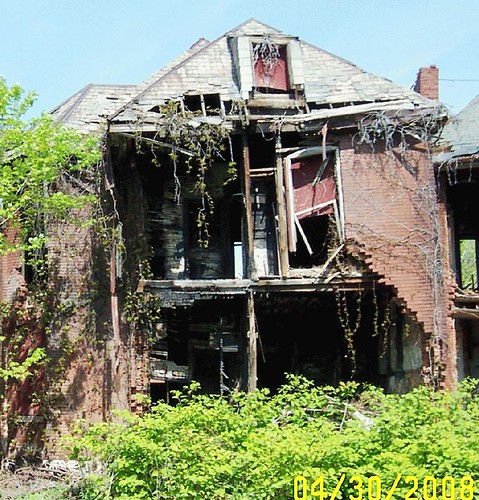
Three years ago many of the large stately homes of Dick Gregory Place, in the Greater Ville neighborhood were on their last legs. Several had literally begun collapse as years of abandonment and exposure to the elements had taken their toll. The home above at 1702 Dick Gregory had been abandoned for over 20 years (date stamped photos from Geo St. Louis). Unfortunately this scene is all to common in several North St. Louis neighborhoods, with the typical ending of demolitions and more vacant lots. The ending of the story of Dick Gregory Place however has defied all odds. Instead of demolition, the historic houses are all nearing completion of extensive renovations and re-building as part of a $13,000,000 project that will result in 32 units of affordable housing in renovated buildings plus four additional units in two new buildings and commercial space on Martin Luther King.
This incredible project is being developed by Northside Community Housing Inc. with assistance from RHCDA. The complex funding package is consists of both Missouri and Federal Historic Rehabilitation Tax Credits, Missouri Low Income Housing Tax Credits, HOME funds, American Recovery & Reinvestment Act funds as well as other funding sources. More information about the development can be found in this Northsider article. Also check out the nomination for the Wagoner Place Historic District, which encompasses Dick Gregory Place and four single block streets to the west of Dick Gregory.
In a reversal of the common trend of converting two-family buildings into single family homes, several of these large homes have had additions at the rear to accommodate conversion to two apartments.

This Google aerial view shows the extent of the substantial rehabilitation of the historic houses and the rear additions added to convert some of the houses to badly needed affordable family apartments. Unlike much affordable housing in multi building complexes that all look the same and stand out from their surroundings, residents of these beautiful historic buildings will be able to take pride in a true neighborhood environment.
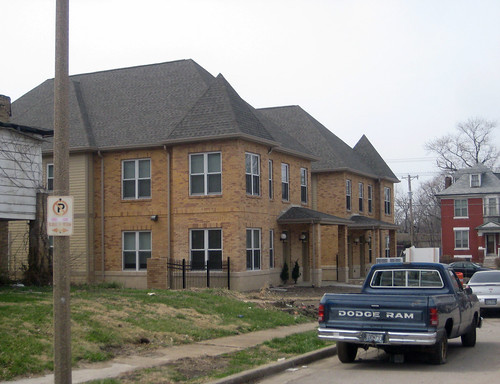 The scale of the two new buildings at the corner of Marcus & Aldine, each with two apartments, fits well with the existing historic buildings in the district without being replications.
The scale of the two new buildings at the corner of Marcus & Aldine, each with two apartments, fits well with the existing historic buildings in the district without being replications.
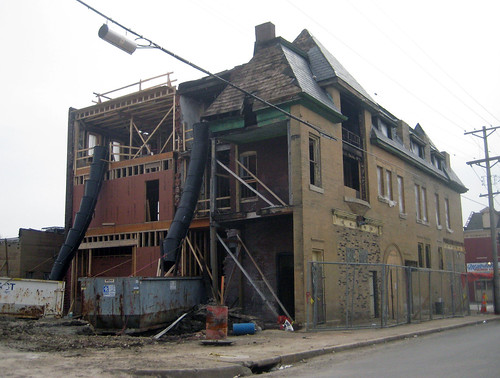 This beautiful corner building at Martin Luther King & Marcus will have commercial space on the first floor along MLK and apartments above.
This beautiful corner building at Martin Luther King & Marcus will have commercial space on the first floor along MLK and apartments above.Before and after at a large two family dwelling at the corner of Martin Luther King & Dick Gregory Place. I'm not sure if the Schoemehl pots will be removed to re-open the street. More of my photos of Dick Gregory Place and adjacent areas can be seen be seen here on Flickr.
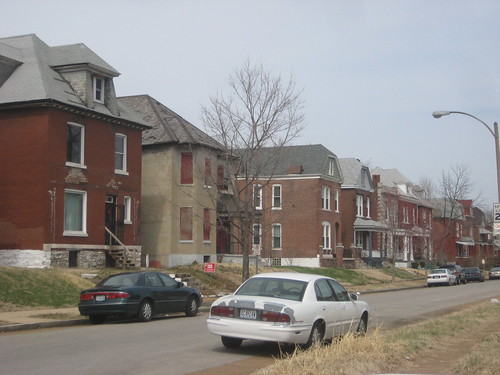 Just across the alley from Dick Gregory Place to the east is Cora Avenue. Compared to the former conditions of Dick Gregory, this street of large homes has managed to remain remarkably intact.
Just across the alley from Dick Gregory Place to the east is Cora Avenue. Compared to the former conditions of Dick Gregory, this street of large homes has managed to remain remarkably intact.While there are a few boarded homes on Cora, most are occupied and very well maintained.
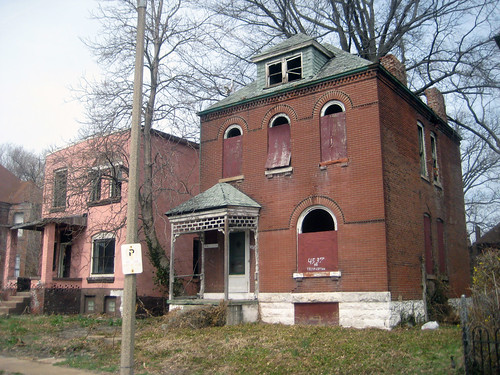 The blocks of Cote Brilliante and Aldine east of Cora however are riddled with vacant lots and vacant homes. Sprinkled in between are a few remaining owner occupants. The boarded homes for the most part though are still in salvageable condition, and would not even require the extensive re-building that occurred on Dick Gregory Place. The area is part of the local Ville Historic District which was expanded in 2006.
The blocks of Cote Brilliante and Aldine east of Cora however are riddled with vacant lots and vacant homes. Sprinkled in between are a few remaining owner occupants. The boarded homes for the most part though are still in salvageable condition, and would not even require the extensive re-building that occurred on Dick Gregory Place. The area is part of the local Ville Historic District which was expanded in 2006.

RHCDA has looked at the possibility of doing a second phase of the Dick Gregory Place project including some remaining properties on Dick Gregory as well as properties in the blocks to the east. If Jay Nixon and the Missouri Legislature have their way thought, this second phase will not be financially possible. As part of Nixon's crusade to slash tax credits, a new rule which had been recommended by Nixon's tax credit commission and now making its way through the state Senate would not allow developers to use both Missouri Historic Rehabilitation Tax Credits and Missouri Low Income Housing Tax Credits on the same project. This short sighted regulation would be a cold slap in the face to North St. Louis as it not only would make phase two of Dick Gregory infeasible, but would make rehabilitating much of the North Side extremely difficult due to deflated real estate values at the same time that several new historic districts are in the works.
